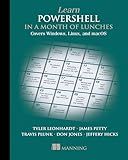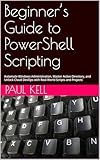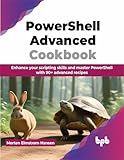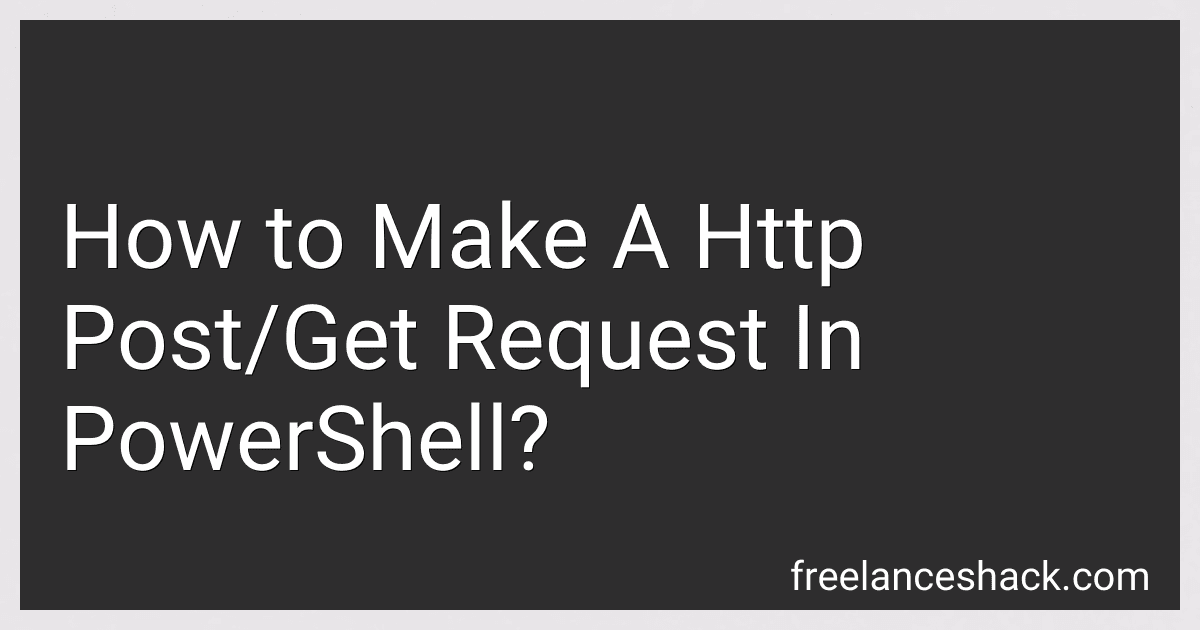Best PowerShell Scripting Tools to Buy in November 2025

Learn PowerShell Scripting in a Month of Lunches, Second Edition: Write and organize scripts and tools



Learn PowerShell in a Month of Lunches, Fourth Edition: Covers Windows, Linux, and macOS



Beginner’s Guide to PowerShell Scripting: Automate Windows Administration, Master Active Directory, and Unlock Cloud DevOps with Real-World Scripts and Projects



Learn Windows PowerShell in a Month of Lunches



PowerShell for Penetration Testing: Explore the capabilities of PowerShell for pentesters across multiple platforms



PowerShell Advanced Cookbook: Enhance your scripting skills and master PowerShell with 90+ advanced recipes (English Edition)



Learn PowerShell Toolmaking in a Month of Lunches



Learn Windows PowerShell in a Month of Lunches



Troubleshooting SharePoint: The Complete Guide to Tools, Best Practices, PowerShell One-Liners, and Scripts


In PowerShell, you can make HTTP POST and GET requests using the Invoke-RestMethod cmdlet. This cmdlet allows you to send an HTTP request to a specified URI and receive the response.
To make an HTTP POST request, you need to provide the URI and the body of the request. The body can be in different formats such as JSON, XML, or plain text. Here's an example of making an HTTP POST request in PowerShell:
$uri = "http://example.com/api/endpoint" $body = @{ username = "myusername" password = "mypassword" } | ConvertTo-Json
$response = Invoke-RestMethod -Uri $uri -Method Post -Body $body -ContentType "application/json"
In the above example, we define the URI of the API endpoint we want to send the POST request to. The $body variable holds the data to be sent in the request, and we convert it to JSON format using ConvertTo-Json. Then, we use Invoke-RestMethod specifying the URI, HTTP method as Post, the body, and the content type as application/json. The response from the API will be stored in the $response variable.
Similarly, to make an HTTP GET request, you can use the following code:
$uri = "http://example.com/api/endpoint" $response = Invoke-RestMethod -Uri $uri -Method Get
In this case, we use Invoke-RestMethod with the URI and HTTP method as Get. The response from the API will be stored in the $response variable.
Remember to modify the URI, request headers, and the request body based on your specific use case.
What is the maximum file size that can be received in an HTTP get request in PowerShell?
The maximum file size that can be received in an HTTP GET request in PowerShell is determined by the underlying .NET framework. However, there is typically no explicit limitation enforced by PowerShell itself.
The maximum file size can be influenced by various factors such as the available memory, server configurations, and network limitations. In practice, the maximum file size is often limited by the server that is serving the file rather than PowerShell itself.
If you are dealing with large files, it is recommended to consider using alternative methods such as streaming or chunking the data rather than loading the entire file into memory at once.
What is the maximum file size that can be sent in an HTTP post request in PowerShell?
In PowerShell, the maximum file size that can be sent in an HTTP POST request is typically determined by the underlying .NET framework. By default, the maximum file size limit for an HTTP request is set to 4 MB. However, this limit can be customized in the web.config file of the server application.
To send a file in an HTTP POST request in PowerShell, you can use the Invoke-RestMethod cmdlet along with the -InFile parameter to specify the file to be sent. Here's an example:
$filePath = "C:\path\to\file.txt" $uri = "https://example.com/upload"
Invoke-RestMethod -Uri $uri -Method POST -InFile $filePath
If the file size exceeds the maximum limit configured on the server, you may encounter errors or need to adjust the server settings accordingly.
How to add headers to an HTTP post request in PowerShell?
To add headers to an HTTP POST request in PowerShell, you can use the Invoke-RestMethod cmdlet with the -Headers parameter.
Here's an example:
$url = "http://api.example.com/endpoint" $headers = @{ "Content-Type" = "application/json" "Authorization" = "Bearer your_token" }
$body = @{ "key1" = "value1" "key2" = "value2" } | ConvertTo-Json
$response = Invoke-RestMethod -Uri $url -Method Post -Headers $headers -Body $body
In this example, we define the URL of the API endpoint, the headers we want to include in the request, and the body of the request.
The -Headers parameter takes a hashtable of key-value pairs representing the headers. Each header field is specified as a key-value pair in the hashtable.
The -Body parameter is used to specify the content of the request body. In this example, we are converting a hashtable to JSON using the ConvertTo-Json cmdlet.
Finally, we use the Invoke-RestMethod cmdlet with the specified URL, the HTTP method Post, the headers, and the body to send the request and store the response in the $response variable.
